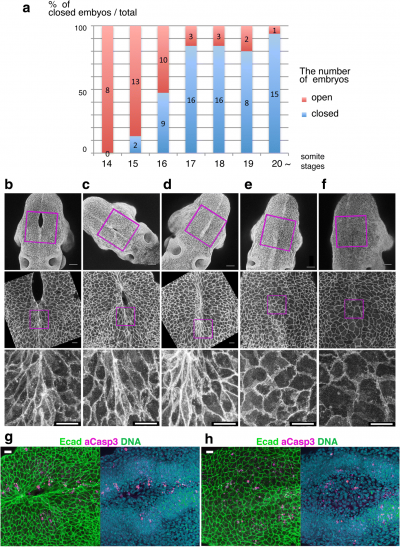User:Z5229438
reference
PMID: 30056110
Walls ML & Hart RJ. (2018). In vitro maturation. Best Pract Res Clin Obstet Gynaecol , , . PMID: 30056110 DOI.
In vitro maturation recent article [1]
Adding an Image
Neuropore cell shape changes[2]
peer reviews:
The introduction is of to a great start as it includes information on both the heart but also the neural crest derivative . I absolutely love the way you outlined the developmental time course and the video is a great feature , however there seems to be two different sections for the developmental time course not sure if this was on purpose .
Overall most sections provide a great amount of information the detail is good enough for students to understand and not too overwhelming for the readers.There are a few editing errors throughout such as formatting that I am sure will be corrected at the end.
There is some confusions with the title of things , it would be helpful to explain the title names before explaining more information above it as well.lastly the animal models and research section seem to be unfinished . but overall great job so far!
adrenal medulla;
The history section seems to be off topic it goes into detail about the nueral crest alone when emphasis on the history behind the adrenal medulla would be more fit to the topic of your project. The embryonic origins section seems to have nothing underneath it .I am unsure if the developmental time course is a subheading to the embryonic origins section because the information provided under developmental time course seems to belong to the embryonic origins section. Sorting this out so that it is clear for the reader would be helpful.
For the tissue structure and adult function portions there is nothing under the adult function but there is information about the adult function under the tissue structure as well , which is alspo confusing. The information is clear as to what it is talking about in the tissue structure section however its just confusing to know when the page will be talking about the adult function as it seems misplaced. The related anatomy under the tissue structure section is also well represented but seems to have no sources .
The information under the mechanisms factors and genes section is very brief which is not an issue but some parts could use further explaining ,such as naming the multiple key contributors the SOX gene provides. There are also links provided and it may be helpful to explain what those links are so readers know what they are looking for when clicking on it.
Abnormalities section is not written , and the animal models section looks good it presents good information that is easy to follow. I would just suggest adding references or links that describe what the link is before students click on it so it is clear .
The current research lab section does not seem to talk about specifc research but more so a broad idea ,it will be helpful to have links to some of those research labs for students interested in following up , as well as a link that is labeled .
Overall good start to the project it seems to need more research and more references throughout other than that its good.
reference
PMID: 29729299
Nascimento AI, Mar FM & Sousa MM. (2018). The intriguing nature of dorsal root ganglion neurons: Linking structure with polarity and function. Prog. Neurobiol. , 168, 86-103. PMID: 29729299 DOI.
- ↑ Walls ML & Hart RJ. (2018). In vitro maturation. Best Pract Res Clin Obstet Gynaecol , , . PMID: 30056110 DOI.
- ↑ Shinotsuka N, Yamaguchi Y, Nakazato K, Matsumoto Y, Mochizuki A & Miura M. (2018). Caspases and matrix metalloproteases facilitate collective behavior of non-neural ectoderm after hindbrain neuropore closure. BMC Dev. Biol. , 18, 17. PMID: 30064364 DOI.
